

LANRE DA SILVA

20 Years Of Pure Fashion






EDITOR’S NOTE
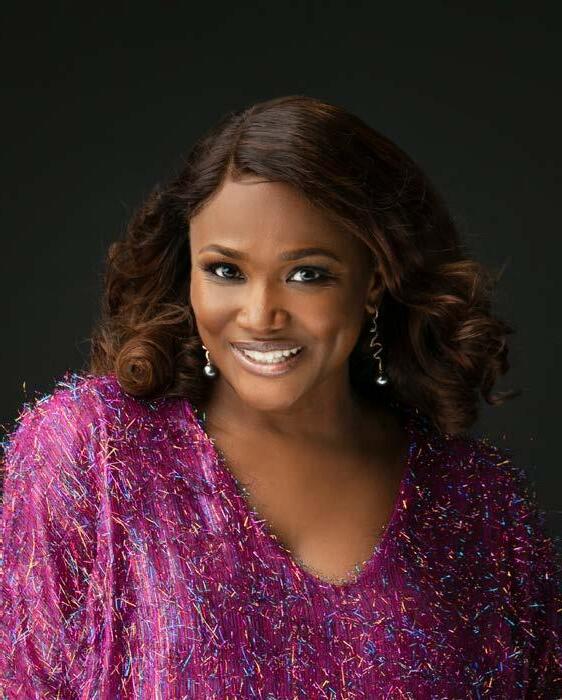
This November marks the 20th anniversary of the label LDA. When the designer Lanre Da Silva started in 2005, she was a young woman with a dream. She began in her living room, sketching designs and cutting fabrics herself, then asking her friends to model them. She didn’t have a studio, but she had a vision, and today, she has evolved as a designer and as a woman. Twenty years in the making, and it has taught her that success isn’t only about creating beautiful clothes, but about purpose, discipline, and using creativity to inspire others. While her designs have evolved, the essence —the art of elegance — has never changed. With every journey comes challenges, and for Da Silva, there were many moments of uncertainty, including when, just before her first international show, the fabrics were stuck in customs for weeks.
Da Silva’s story is very inspiring; scroll to pages 8 to 10 to read about her.
This week, our fashion pages discuss a piece that never goes out of style—the turtleneck. They are simple, elegant and can be styled in different ways. The beauty of this fashion piece is that it can elevate your look with minimal effort. Learn how to style turtlenecks on pages 4 and 5 of this issue.
When it comes to skincare products, it’s easy to get carried away by the endless options in the market, but did you know that some products are a complete waste of time and money? In this week’s beauty page, we list such products. Scroll to page 12.
Check out the playlist on page 16 and download it. You’ll love it.
Until next week, enjoy your read.


@onahluciaa +

AUSTYN OGANNAH
PUBLISHER/EDITOR-IN-CHIEF
Executive Editor: Onah Nwachukwu @onahluciaa
Writer: Johnson Chukwueke
Design & Layout: Olaniyan John ‘Blake’
Digital Media: Oladimeji Balogun
Consulting Art Director: Sunny Hughes ‘SunZA’
www.thewilldowntown.com
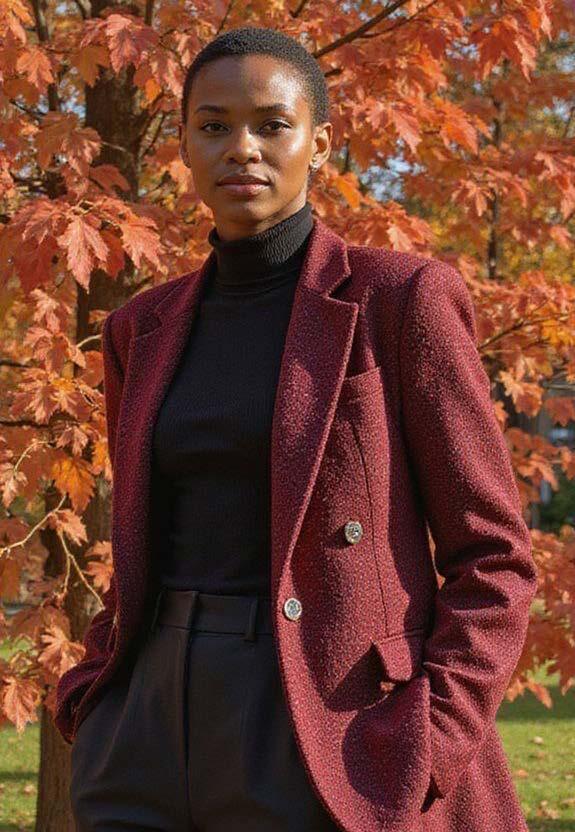
5 Stylish Ways to Wear Turtlenecks
Skincare Products That Are A Total Waste of Money
Normalising Therapy Taking Care of Your Emotions Without Shame 12 13
DOWNTOWN CONFIDENTIAL COVER
#UNSHAKABLE TRUTHS LUXURY SILK
Untold Truths The Softness Return
Lanre Da Silva 20 Years Of Pure Fashion
The Ministry of Calm (Not Everyone Got the Memo)






The Day I Found My Voice Continental Brunch
Predator: Badlands

Boluwatife Adesina @bolugramm
- Contributing Writer
Boluwatife Adesina is a media writer and the helmer of the Downtown Review page. He’s probably in a cinema near you.
Dorcas Akintoye @mila_dfa_ - Contributing Writer
Dorcas Akintoye is a dedicated writer with 5 years prolific experience in writing articles ranging from food, entertainment, fashion and beauty. She loves writing, listening to music and playing scrabble. She is a highly-skilled, enthusiastic, selfmotivated professional writer.
Sally Chiwuzie @unshakable.is.a.state.of.mind
- Contributing Writer
Sally Chiwuzie is a non-practising barrister who owns the brand #Unshakable. She is the author of Silent Symphonies, a fictional love story, and the creator of the podcast Chronicles of #Unshakable Truths.
Ada Obiajunwa @aaddaahh
- Contributing Writer
Ada Obiajunwa writes from Lagos about the big truths tucked inside ordinary moments — friendship, self-discovery, and the quiet revolutions of everyday life. She believes in the power of presence, good banter, and decoding the unsaid. Through her fragrance studio, WhiffWonders, she also crafts scents that weave memory and emotion into experiences that feel like home.





















TO WEAR TURTLENECKS 5 STYLISH WAYS
BY DORCAS AKINTOYE
Turtlenecks are one of those fashion pieces that never go out of style. They’re simple yet classy, cosy yet elegant, and can easily be styled in many ways. Whether you’re dressing up for a formal occasion, going casual, or trying to add layers to your outfit, turtlenecks can be your best friend. The beauty of turtlenecks is that they can instantly elevate your look with minimal effort —they’re that versatile. Let us show you five stylish ways to wear turtlenecks and make them look effortlessly chic.

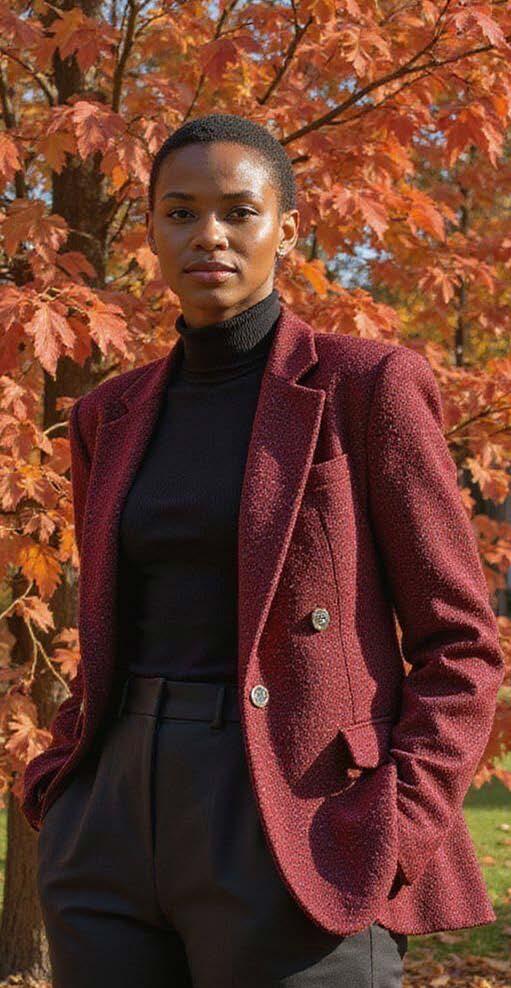
LAYER IT UNDER A BLAZER
If you want to look classy and sophisticated, pairing a turtleneck with a blazer is one of the easiest ways to go. This combination gives you a clean and polished appearance that’s perfect for work, meetings, or semi-formal events. You can opt for a fitted black or cream turtleneck and pair it with a bold-coloured or patterned blazer. Pair this with tailored trousers or jeans, depending on the occasion. Finish the look with simple jewellery and stylish heels or loafers.
TUCK IT INTO HIGH-WAISTED PANTS OR SKIRTS
Tucking your turtleneck into high-waisted pants or skirts instantly gives you a smart and put-together look. It defines your waistline and adds shape to your outfit. You can wear a slim-fit turtleneck with high-waisted jeans for a casual outing, or opt for wide-leg pants for a more stylish look. For a feminine twist, pair it with a midi or pleated skirt and ankle boots. This look is both chic and comfortable, making it perfect for brunch, dates, or even a casual day at work.
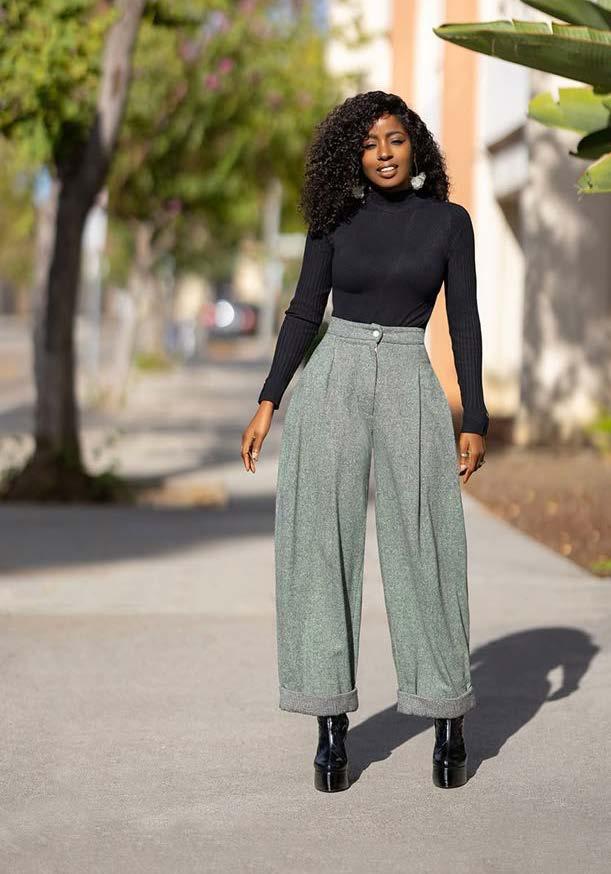
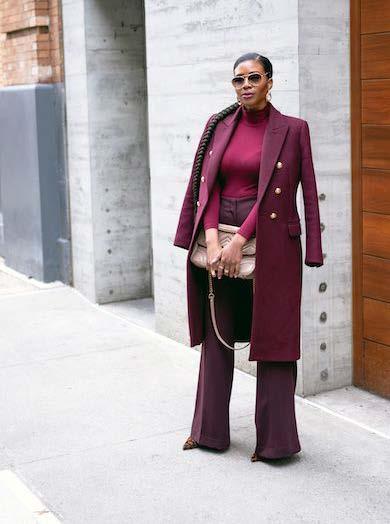
LAYER UNDER A DRESS
Wearing a turtleneck under a dress is one of the most creative ways to stay warm and stylish at the same time. This style lets you wear your sleeveless or strappy dresses even during the cooler months. For instance, you can wear a black turtleneck under a floral slip dress or a pinafore dress for a cute, layered look. It’s a great way to look fashionable and unique.
GO FOR A MONOCHROME LOOK
If you want to look effortlessly elegant, go for a monochrome outfit —wear the same colour or shades of that colour from top to bottom. A white turtleneck paired with white trousers, or a beige turtleneck with matching pants, gives off a clean, sophisticated vibe. You can also try bold colours like red, green, or navy to stand out. To complete the look, add a belt to break the outfit slightly and wear simple jewellery. Monochrome outfits make you look taller, slimmer, and very stylish without much effort.
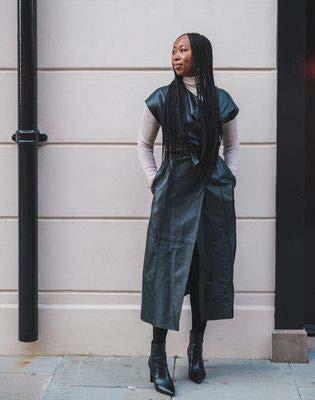
WEAR IT CASUALLY WITH DENIM
For those who love simple yet trendy looks, wearing a turtleneck with denim is the way to go. It’s comfortable, easy to pull off, and perfect for everyday wear. You can pair your turtleneck with jeans, skirts, or even a denim jacket. This combo gives off that cool, laid-back vibe while still keeping you stylish.

Turtlenecks are wardrobe essentials that work for anyone, no matter your style. Whether you’re going for a classy, casual, or chic vibe, these five styling ideas will help you make the most out of your turtlenecks.



SALLY CHIWUZIE @unshakable.is.a.state.of.mind
UNTOLD TRUTHS
THE SOFTNESS RETURN
She had been through a decade of darkness.
Not the dramatic kind — but the slow, quiet kind that seeps into the corners of your life until you forget what light feels like. A love that broke her heart. A friendship that took over her world and then betrayed it. The kind of grief that leaves fingerprints on everything.
She was one of the lunch in Paris crew — fifteen women, some strangers, some kindred spirits, who met for one unforgettable day. Over wine and laughter, she had said something that stayed with me: I’ve learned to survive, but I’ve forgotten how to live.’
That day, she promised herself she’d try again.
But healing isn’t linear. She threw herself into work. Built boundaries — thick, tall, impenetrable ones. Told herself she was protecting her peace, but really, she was protecting her pain. She had mistaken strength for stiffness. She became excellent at functioning and terrible at feeling.
Then her closest friend died — the one who had once been the centre of her world, even through the chaos. It was a loss that defied language.
When I called to offer condolences, someone beside her said softly, ‘I hope something beautiful grows out of that void.’ It took time, but it did.
Slowly, almost imperceptibly, she began to thaw. She learned that boundaries didn’t have to be barricades; that they could be walls with doors and windows, opened or closed on her own terms. She discovered that friendship didn’t have to be “ride or die,” that love didn’t have to be dramatic to be deep. It could be semidetached, breathable, and still beautiful. And in that breathing space, she rediscovered herself.
Whitney Houston — and sang along without worrying who was watching. She began to find joy in the ordinary, excitement in the mundane.
She no longer needed life to be extraordinary to feel alive.
That was the miracle.
After a decade of darkness, she had learned how to return to softness — but this time, on her own terms. Not naive anymore, but wiser. Her softness had been fire-tested. It wasn’t the openness of a woman desperate to please; it was the openness of one who finally understood her own worth.
Her heart no longer swung open for everyone, but when it did, it was intentional, generous, and real. She became light again, not because life got easier, but because she stopped letting it harden her.
And then, just as quietly as she had survived, she left.
When she died, her sister attended the funeral and told me afterwards, “We could all take a cue from her. Life is proverbially short. She didn’t just talk about living again — she did it.” And she was right. We spend so much of our lives preparing for storms that we forget to celebrate the sunlight. We build walls to survive the wind and then forget to open the windows when it’s calm. We protect ourselves so fiercely from pain that we forget softness is not weakness, it’s wisdom.
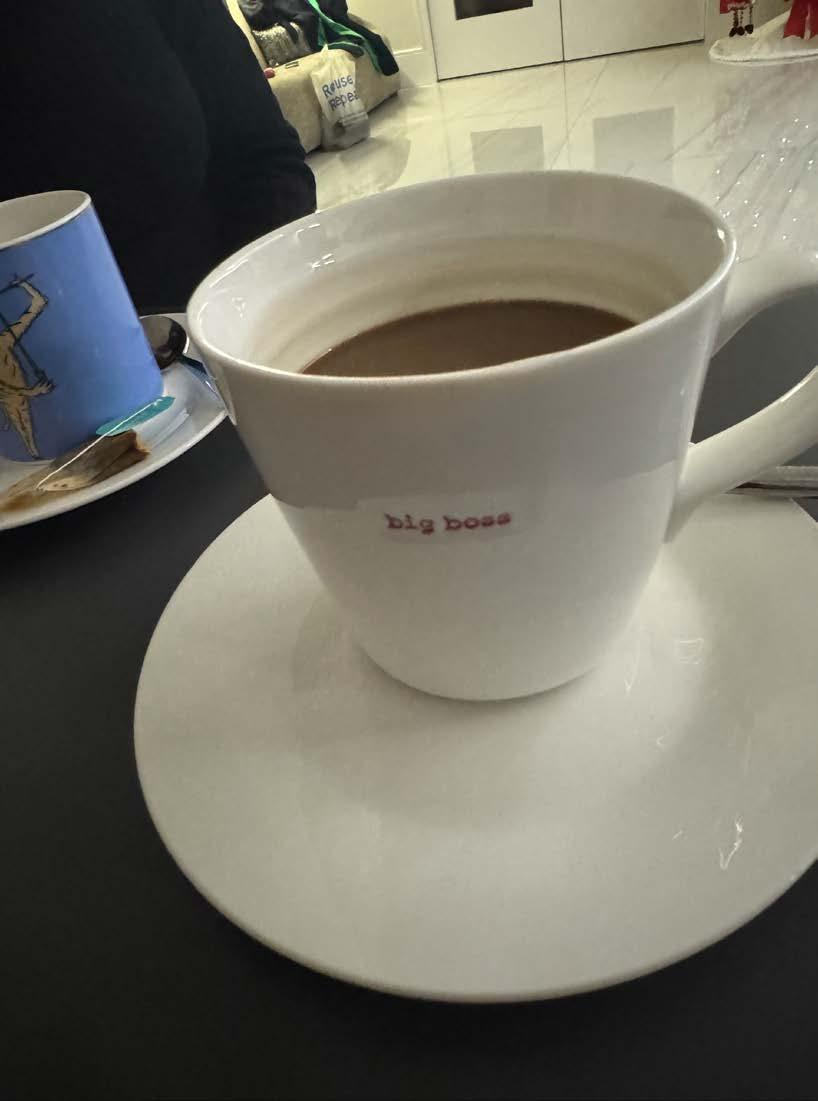
She went to art galleries alone and realised she enjoyed her own company. She booked tribute concerts — Elton John, Tina Turner,
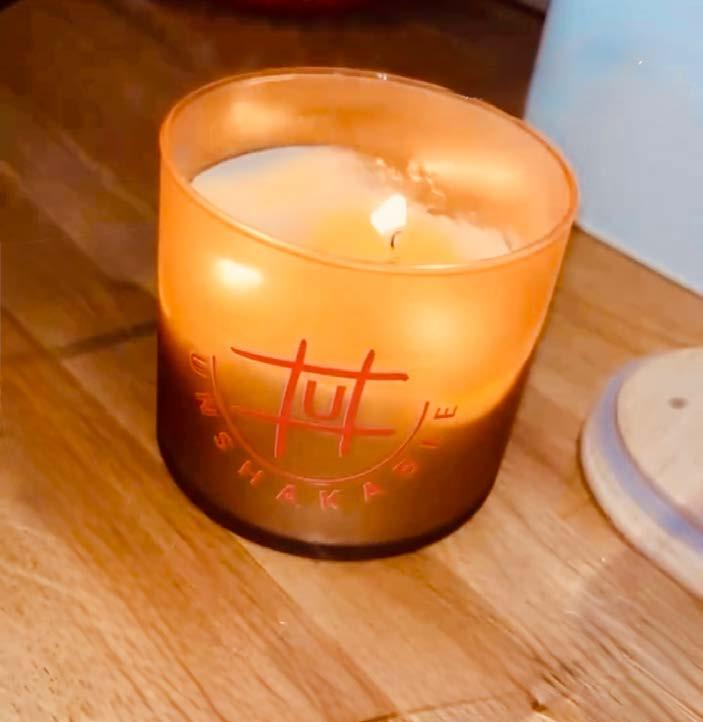

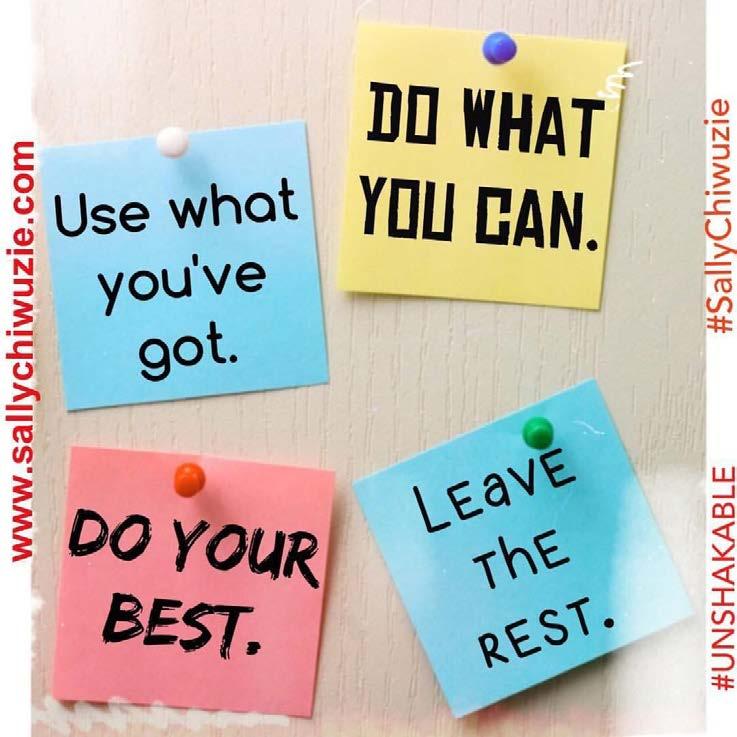
She taught me that the real strength is not in staying guarded, but in daring to feel again. To love again. To hope again. To book the concert tickets, eat the dessert, visit the gallery, and dance anyway. Because life will always test us, but joy… true joy… is a rebellion.
And perhaps this is the #Unshakable truth: Once you’ve been burned, softness becomes a
conscious act of courage. To remain gentle in a hard world is not naivety — it’s mastery. It’s how we build legacies not just of survival, but of light. So here’s to the woman who learned to soften again — who turned her pain into melody, her boundaries into grace, and her life into a quiet kind of art. And here’s to anyone learning to do the same to live gently after chaos, to keep their heart open after heartbreak, to let life touch them without breaking them.
May we all remember that softness, in the end, is strength; and that even the most unshakable hearts were once tender.
‘See’ you next week.
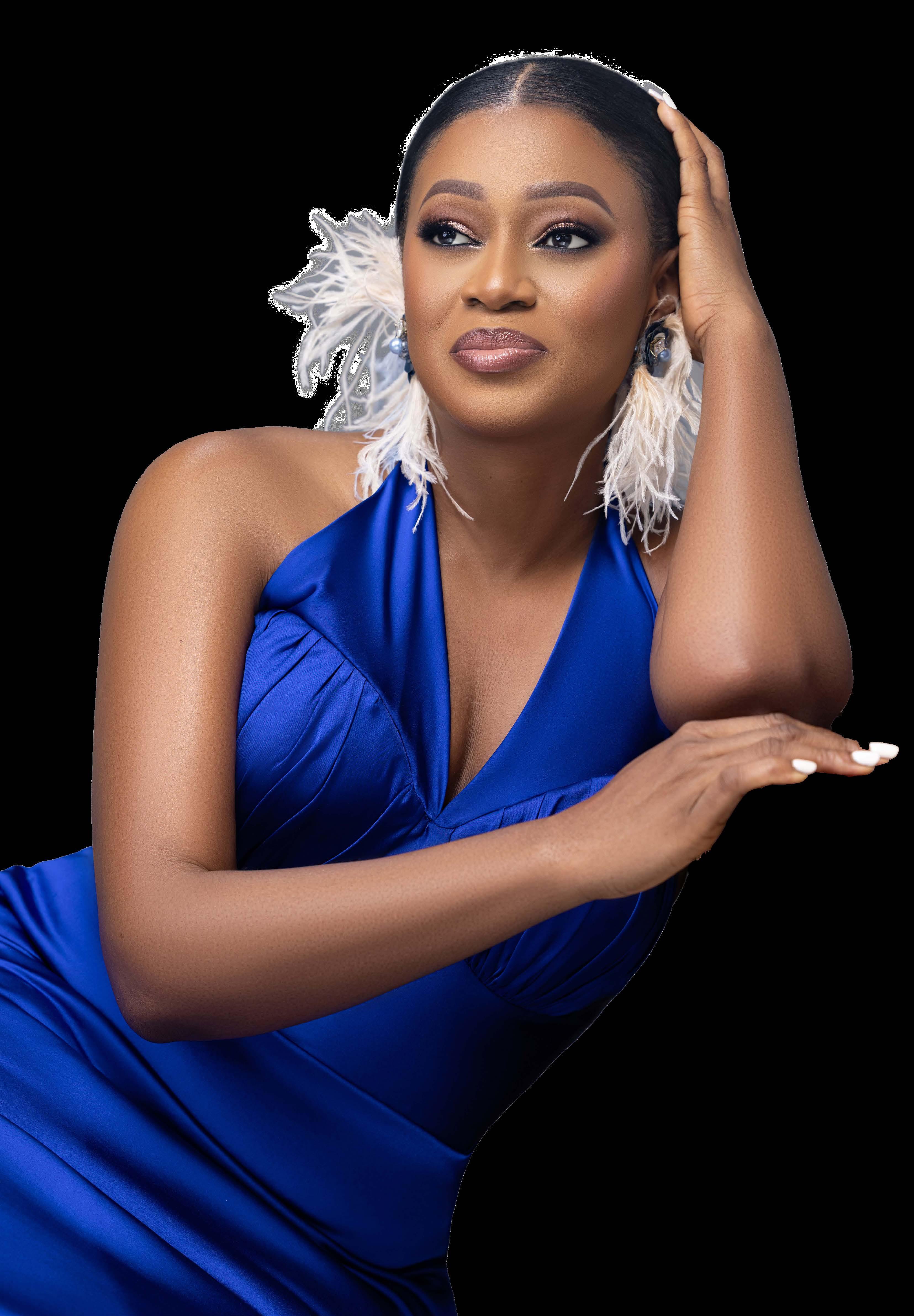
LANRE DA SILVA
20 YEARS OF PURE FASHION
Thevalue of authenticity in the Nigerian fashion industry cannot be overemphasised. Much of the industry’s progress, both locally and internationally, can be traced to designers who have stayed true to their African heritage. Over the years, Nigerian fashion has evolved remarkably, but one of the most profound shifts, which isn’t celebrated enough, is the global recognition of Nigerian luxury fashion. What was once an overlooked idea has become a thriving reality. Nigerian designers now grace international runways, our fabrics are adored, and our creativity is respected across continents. This transformation is a testament to the power of authenticity. Without the vision and resilience of designers who remained rooted in Africa’s identity, understanding that our fashion has its own rhythm, soul, and story, Nigerian fashion might never have found its rightful place on the global stage.
Lanre Da Silva is one of the pioneers who has shaped this story. Since launching her label, LDA, in 2005, she has become one of the most respected names in African fashion. Known for her rich use of lace and metallic fabrics, Lanre’s designs blend history, culture, and elegance in a way that feels both modern and classic. Her work has been showcased in New York, London, and Milan, and stocked in prestigious stores like Dolce & Gabbana’s Spiga 2 in Italy. For 20 years, she has built a brand that reflects excellence, grace, and consistency. Her journey is not just about clothes; it’s about purpose, discipline, and using creativity to inspire others.
In this interview with THEWILL DOWNTOWN’s Executive Editor, Onah Nwachukwu, Lanre Da Silva discusses her inspiring 20-year journey in fashion, the challenges she faced in building a luxury brand from Africa, and the lessons that kept her going. She also opens up about her creative process, staying relevant in a changing industry, and what the next chapter holds for LDA.
This year marks 20 years of LDA. Looking back to 2005 when you started, how would you describe the woman who began this journey and the woman you’ve become today?
In 2005, I was simply a young woman with a dream. One who loved beauty, art, and storytelling. I remember sitting at my dining table with sketch pads everywhere, cutting fabrics myself, and asking friends to model my very first collection. I had no big studio, no established structure, but I had vision. Today, I’m grateful for how far that vision has come. I’ve evolved as a designer and as a woman. The past 20 years have taught me grace under pressure, the strength in patience, and the joy of consistency. The woman I am now understands that success isn’t just about creating beautiful clothes; it’s about purpose, discipline, and using creativity to inspire others.
Many designers evolve with time, but your work has always maintained a distinct signature. What would you say has remained the soul of your brand through the years? The soul of LDA has always been authenticity and detail. From day one, I have had an emotional connection to craftsmanship, embellishments, textures, structure, and storytelling. I have always been fascinated by how history and modernity can exist side by side. What has remained constant is my celebration of the LDA woman — bold yet feminine, classic yet forwardthinking. My designs have evolved, but the essence, which is the art of elegance, has never changed.
Every journey comes with challenges. What are some of the toughest obstacles you’ve faced as a Nigerian designer building a globally recognised brand, and how did you overcome them? There were so many moments of uncertainty. I remember a time early on when I was preparing for my first major international showcase. A shipment of fabrics got stuck at customs for weeks. I thought everything was ruined. But we adapted. My team and I spent nights reworking designs with what we had locally. That collection ended up being one of my most celebrated ones. That experience taught me that creativity thrives in adversity. Nigeria is not an easy place to build a global fashion brand given the inherent infrastructural and logistic challenges. But our resilience as Nigerians is unmatched. We find a way. I learned to see challenges not as setbacks, but as creative opportunities.
“Inspiration is everywhere. In architecture, in art galleries, in our Yoruba traditions, even in poetry. I once designed a collection inspired by a vintage lace tablecloth from my grandmother’s home. That piece of history became an entire narrative of nostalgia and modern femininity. Balancing the modern and timeless is instinctive for me.”
Working with Vlisco especially taught me the power of cultural exchange; seeing how our African heritage could be expressed in such refined, global ways was deeply fulfilling. These experiences reminded me that African fashion doesn’t have to mimic the West because it has its own rhythm, its own soul. It gave me confidence to design unapologetically from my roots, while still appealing to a global audience.
Your designs often blend history, art, and culture. What inspires you the most when creating, and how do you balance modern trends with timeless elegance?
Inspiration is everywhere. In architecture, in art galleries, in our Yoruba traditions, even in poetry. I once designed a collection inspired by a vintage lace tablecloth from my grandmother’s home. That piece of history became an entire narrative of nostalgia and modern femininity. Balancing the modern and timeless is instinctive for me. I appreciate trends, but I never chase them. My focus is creating pieces that feel contemporary yet can be worn ten years from now and still look relevant. That’s true luxury — timelessness.
Longevity in fashion isn’t easy. What has been your secret to staying relevant and successful for 20 years in such a competitive industry?
The Nigerian fashion industry has grown immensely in the last two decades. How would you describe its evolution, and what changes do you still hope to see?
The growth has been incredible. When I started, the idea of “Nigerian luxury fashion” barely existed in the global conversation. Today, our designers are on international runways, our fabrics are celebrated, and our creativity is respected. That’s a tremendous shift. However, we still need more structure ranging from manufacturing to retail infrastructure and access to finance. There’s immense talent here, but for us to be truly sustainable, we need systems that support designers in scaling their craft. I look forward to seeing that happen in the next chapter of Nigerian fashion.
Passion and reinvention. You have to love this deeply, because fashion is not just glamour. It is hard work, sleepless nights, and constant problem-solving. I am always learning, observing, and experimenting. But I think the real secret is grace — understanding that every phase, even the quiet seasons, has value. You must evolve with time while holding onto your essence. That balance has kept me grounded for 20 years.
With the rise of digital fashion and social media, how has LDA adapted to the new era of fashion consumption and storytelling?
“Digital has changed everything. I remember when we relied solely on fashion shows and magazines to reach audiences. Now, one Instagram post can connect you to someone in Tokyo or New York instantly. We have embraced digital storytelling, showing behind-the-scenes moments, sharing the emotion behind each piece.”
You’ve showcased on international platforms, from New York to Milan, and collaborated with global brands like Vlisco. How have these experiences influenced your creative direction and global outlook? They have been incredibly enriching. Each collaboration and showcase opened my eyes to how vast, yet connected the world of fashion is.
Digital has changed everything. I remember when we relied solely on fashion shows and magazines to reach audiences. Now, one Instagram post can connect you to someone in Tokyo or New York instantly. We have embraced digital storytelling, showing behind-the-scenes moments, sharing the emotion behind each piece. I love how it humanises the brand. It’s not just about fashion anymore; it’s about community, engagement, and authenticity.
You’ve inspired countless young designers. What advice would you give to upcoming creatives who dream of building a sustainable brand in Nigeria and beyond? Be authentic. Be patient. And never stop learning. The journey is not overnight. It is layer upon layer of growth. Understand the business side of fashion as much as the creative side. Also, value integrity. It’s easy to get lost in trends, but substance endures. Build something that outlives seasons. And remember — passion

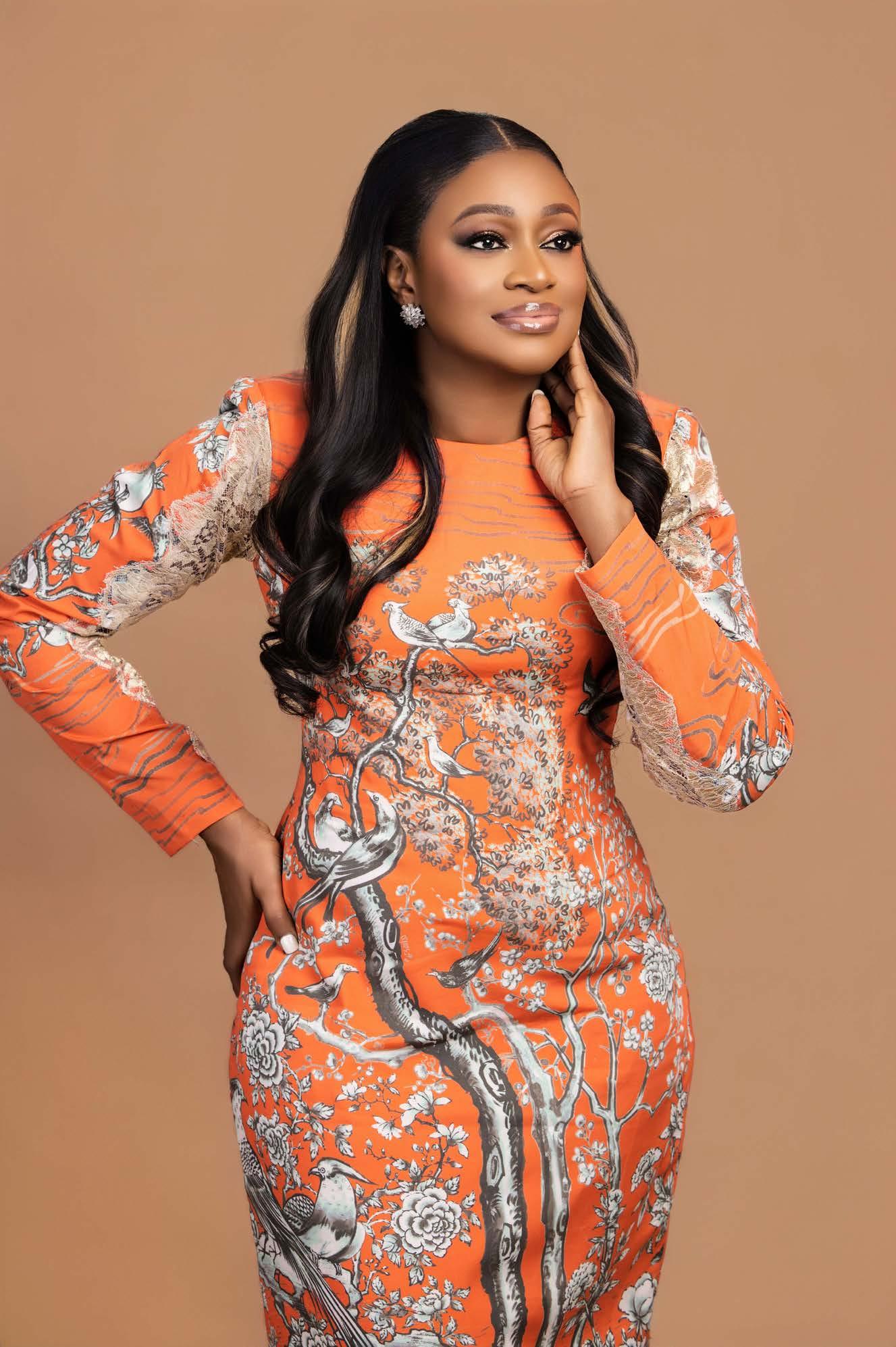
will take you far, but purpose will sustain you.
As you celebrate this remarkable milestone, what’s next for LDA? Should we expect a new direction, collaboration, or legacy project to mark your 20th anniversary?
Absolutely. This milestone is not just about looking back — it’s about looking forward. I am working on a legacy project that celebrates two decades of craftsmanship while mentoring a new generation of designers. It’s important for me to give back, to share what I’ve learned. We’re also exploring new collaborations that merge tradition and technology, heritage and innovation. For me, the next chapter of LDA is about expansion — not just of fashion, but of impact.
Any final thoughts?
Twenty years feels surreal — like turning the pages of a story written with fabric, faith, and perseverance. I’m deeply grateful to my team, clients, family, and everyone who believed in the LDA dream. This isn’t the end of a chapter; it’s the continuation of a legacy that I hope will inspire others to dream boldly and create fearlessly.

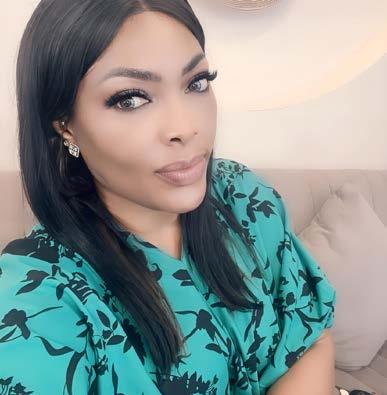
ADA OBIAJUNWA
@aaddaahh
THE MINISTRY OF CALM
(NOT EVERYONE GOT THE MEMO)
Some
people’s lives allow them to pause.
They can switch off their phones at nine, light a candle, and call it selfcare.
They wake up to quiet mornings and end their days with calm playlists and silk pyjamas.
Their peace has space to stretch.
And then there are others.
The parents, caregivers, breadwinners, and professionals holding five worlds at once. They are the first to wake and the last to rest, often running on caffeine, prayer, and pure survival instinct.

There are people fighting silent battles, physical, mental, and emotional, who can’t rest in the Instagram sense of the word. There are single parents carrying homes on their backs, professionals clocking 14-hour days with smiles they’ve ironed on, and caregivers balancing love and exhaustion like a full tray of jollof in traffic.
Sometimes, it’s saying no when yes would be easier.
Sometimes, it’s closing your eyes in church, not to pray, but to rest your spirit for two sacred minutes.
For those living with illness or burnout, peace can mean simply getting through the day, breath by breath, prayer by prayer.
That counts too.
Because peace doesn’t always come in long stretches. Sometimes, it arrives in fragments, like those moments between generator sounds when the world goes still.
So maybe the goal isn’t to find peace, but to hold it, however it comes.
For some, it’s a nap that actually works.
For others, it’s a laugh that lasts longer than the problem.
Their peace isn’t scented; it’s stolen. It lives between traffic lights, homework, and deadlines. If sleep were a university course, they’d be auditing it part-time.
Somewhere in the middle are the rest of us, half calm, half chaos, managing emotions and electricity bills side by side.

Because let’s be honest, peace sounds simple until life starts lifing.
For some, peace is an early bedtime. For others, it’s five quiet minutes in the car before the next school run.
For some, it’s journaling and affirmations. For others, it’s just seeing NEPA light come on at the same time as their sanity.
Some people light candles; others light generators.
Both are valid forms of hope.
Not everyone has the luxury of a slow life. Some are just trying to survive one day at a time.
And it’s not that they don’t want peace; it’s that, for them, peace comes in microdoses, like Wi-Fi that works only when the router feels generous.
Maybe peace isn’t one-sizefits-all. It’s personal. It’s contextual. It depends on your stage, your salary, and sometimes your children’s homework load.
For some, peace feels like silk, soft, scented, uninterrupted. For others, it’s denim, stretched, hardworking, and never quite still.
But both are real. Both are valid.
Maybe peace isn’t something we find, but something we manage, like data. Unlimited for some, rationed for others, but everyone trying to make it last till month’s end.
The older you get, the more you realise peace isn’t always quiet. Sometimes, it’s laughing when crying would make more sense.
And for those whose lives are loud, the ones carrying homes, hearts, and hope on their backs, may their peace visit them softly, even if only for a moment.
And if anyone has the gift of calm, the ability to pause, breathe, and reset, may they hold gratitude, not guilt.
Because peace, when you can afford it, isn’t proof of superiority. It’s proof of privilege.

The real test is what we do with it.
Do we use our calm to show grace?
Do we make room for those who can’t stop moving?
Do we extend kindness to those whose lives never pause?
Because peace doesn’t need to look perfect; it just needs to exist somewhere.
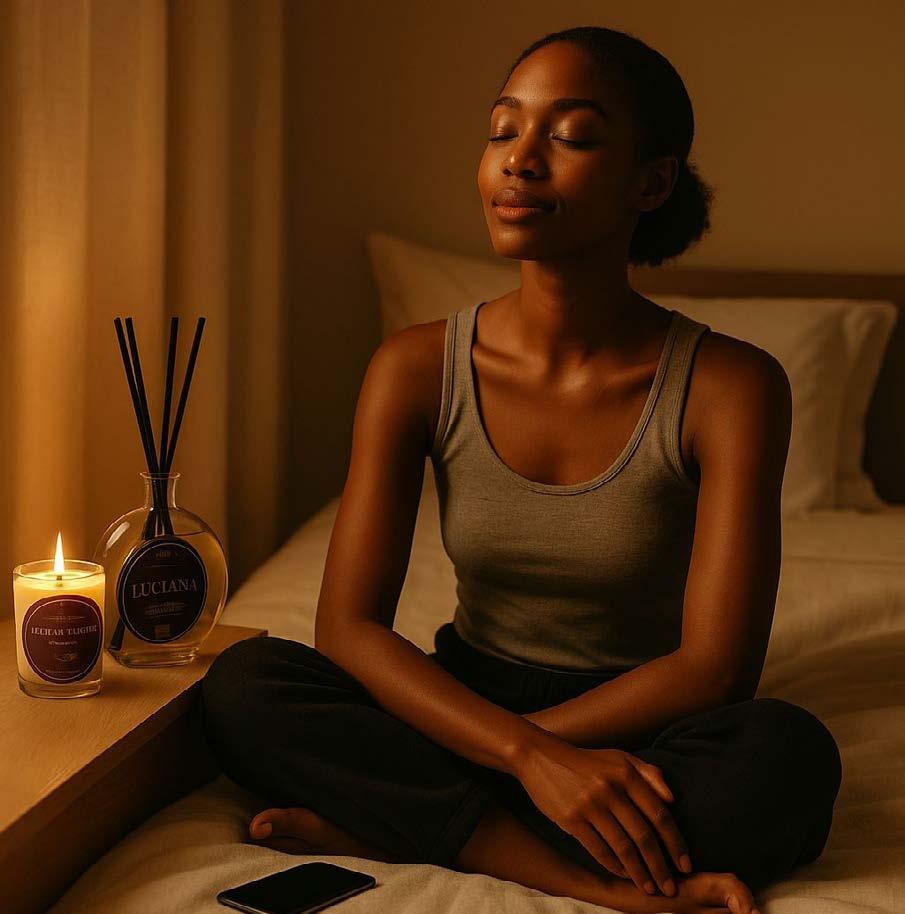
Even if it’s in the chaos of a kitchen, the quiet of a commute, or the laughter after tears.
Peace, in the end, isn’t about silence or soft music. It’s about grace — stretched, flawed, human —grace that reminds us we’re still here, doing our best, one deep breath (and one NEPA outage) at a time.
BEAUTY
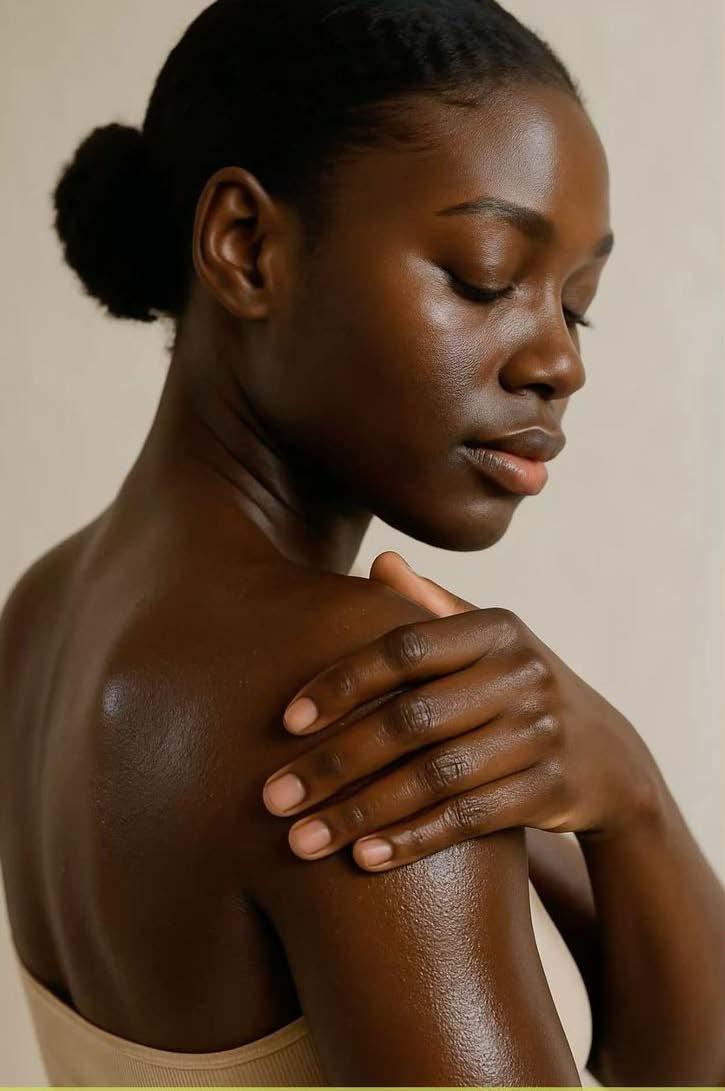
PORE-MINIMISING PRODUCTS
No product can actually shrink your pores; their size is mostly genetic. These “pore-minimisers” only temporarily tighten the skin or temporarily blur pores for a few hours. After washing your face, the effect disappears. Instead of wasting money on them, focus on gentle exfoliation with ingredients like salicylic acid to keep your pores clean and make them look smaller naturally.

EXPENSIVE FACE MISTS
Face mists feel refreshing, but that’s about it. Most are just water with a bit of fragrance or floral extract; they don’t hydrate deeply or improve your skin. Some even make your skin drier when the water evaporates. If you like misting, go for a hydrating toner or essence with real ingredients like hyaluronic acid or glycerin for lasting moisture.
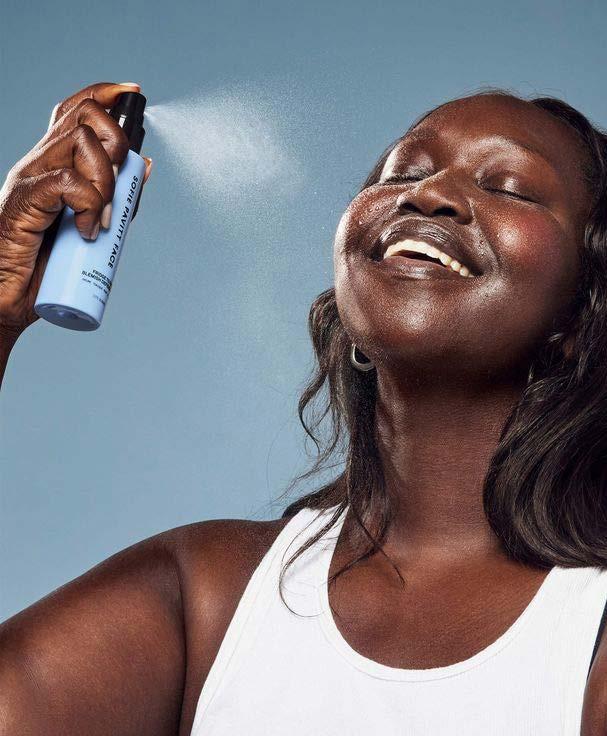
THAT ARE A TOTAL WASTE OF MONEY SKINCARE PRODUCTS
BY DORCAS AKINTOYE
When it comes to skincare, it’s easy to get carried away by the endless products on the market. From fancy serums to toners that claim to shrink your pores, the skincare world can sometimes feel like a trap for your wallet. But here’s the truth: not every product is worth your money. Some are simply overhyped, unnecessary, and do very little (if anything) for your skin. In this article, we will show you five skincare products that are honestly a total waste of cash, and what you should do instead.



EYE CREAMS
Eye creams are often just regular moisturisers in smaller, pricier packaging. Unless you have specific issues like puffiness or genetic dark circles, they don’t do anything special. A good face moisturiser and daily sunscreen will give your under-eye area all the care it needs; no need for extra cream.
SHEET MASKS
They’re fun to use, but mostly a short-term fix. Sheet masks make your skin look glowy for a while, but the effect fades fast. Plus, using them regularly is expensive and wasteful.
Instead, invest in a serum or moisturiser you can use daily for lasting results.
HIGH-END CLEANSERS
Cleansers are on your face for just a few seconds before you rinse them off, so there’s no reason to spend big money on them. The main job of a cleanser is to remove dirt, oil, and makeup without stripping your skin. You don’t need to pay a premium price for that. In fact, some expensive cleansers contain unnecessary fragrance or harsh ingredients that can actually irritate your skin. A mild, nondrying cleanser that fits your skin type is all you need. Save your money for products that stay on your skin, like serums and moisturisers.
When it comes to skincare, more money doesn’t always mean better results. So, before you spend thousands chasing glowing skin, remember this: skincare isn’t about how many products you use or how fancy they are; it’s about consistency and simplicity.

NORMALISING THERAPY
TAKING CARE OF YOUR EMOTIONS WITHOUT SHAME
BY JOHNSON CHUKWUEKE
There was a time when saying “I’m in therapy” in Nigeria would be met with raised eyebrows, a sideeye, and someone whispering, “hope it’s not madness?” But thankfully, times are changing, and fast. Emotional self-care is no longer reserved for Hollywood characters crying into tissues on leather couches.
From Twitter threads to TikTok therapists, Gen Z and millennials across Nigeria are unlearning the stigma and giving therapy a seat at the table right next to jollof and coconut water.
Still, we have a long way to go. Many people suffer in silence, wear emotional exhaustion like perfume, and think “being strong” means pretending everything is okay. The truth? Mental wellness is strength. Vulnerability is power. And therapy? It’s not a last resort—it’s a lifestyle.
Let’s talk about how we can normalise emotional self-care in Nigeria, one conversation at a time.

Therapy is Not Taboo, It’s a Tool
Therapy is like going to the gym, but for your mind. You don’t wait until your legs stop working to start exercising, and the same goes for your emotions. It helps with everything from anxiety to heartbreak to simply understanding yourself better.

Not All Therapy Looks the Same
You don’t always need to be face-to-face with a therapist in a clinic. There are virtual platforms, wellness coaches, journaling, mindfulness apps, and group support circles. The goal is emotional maintenance, not perfection.

Your Feelings Are Valid
From breakups to burnout, from grief to confusion—what you feel matters. Stop brushing things off with “I’m fine” or “na small thing.” If it weighs on your heart or affects your sleep, it deserves attention.

You’re Not “Crazy” For Needing Help
Let’s bury that stereotype for good. Seeking therapy doesn’t mean you’re weak or unstable. It means you’re self-aware, emotionally responsible, and proactive about your peace of mind. If anything, that’s premium maturity.

Be Loud About Your Healing
When people share their therapy journey openly, it helps others see it as normal. Be the friend who says, “My therapist helped me realise…” Let’s make emotional self-care as trendy as skincare routines and matcha lattes.
It’s time we upgraded our definition of wellness to include what’s going on inside. Emotional self-care isn’t just for those “going through it” — it’s for all of us, every day. In the same way we exercise, eat clean, and track our water intake, we should check in with our thoughts and feelings, too.
Therapy isn’t about fixing what’s broken. It’s about understanding your inner world so you can live more freely, love more deeply, and show up for yourself more consistently. So the next time you hear someone say, “You dey go therapy?” smile and reply, “Of course. Don’t you love your peace of mind?”
BON APPÉTIT

CONTINENTAL BRUNCH

France – The Elegant Parisian Start
In France, brunch is chic, simple, and always indulgent. Think buttery croissants, croque madame, freshly baked baguettes, soft cheeses, fruit preserves, and of course, café au lait. The French embrace minimalism in presentation but maximum pleasure in taste. Their brunch is not about excess—it’s about savouring every bite slowly, ideally while people-watching from a cosy corner bistro.

Italy – The Espresso Lover’s Delight
In Italy, mornings are fast but flavourful. Italians prefer a light start, cornetto (a soft, sweet croissant), paired with espresso or cappuccino. But in cities like Milan and Rome, brunch is evolving with contemporary flair, mixing avocado toast, cold cuts, and prosecco. Still, no matter how modern the menu gets, coffee remains the heart of any Italian brunch.
BY JOHNSON CHUKWUEKE
Brunch, the sweet spot between breakfast and lunch, isn’t just a meal; it’s a mood, an experience, and a delicious cultural expression. Across Europe, brunch takes on distinct flavours and traditions that reflect each country’s rhythm and lifestyle. From flaky pastries to hearty spreads and aromatic coffees, Europeans have perfected the art of leisurely mornings. Whether you’re nibbling on a croissant at a Parisian café, enjoying a full English in London, or digging into shakshuka in Berlin, each bite tells a story. Here’s a culinary passport through five European brunch experiences that will make you want to set your table like a continental café.

England – The Classic Full English
A British brunch is a hearty affair. The iconic Full English Brunch includes eggs, sausages, baked beans, grilled tomatoes, mushrooms, bacon, and toast. Sometimes, even black pudding makes an appearance. Pair it with a strong cup of English breakfast tea or coffee, and you’ve got fuel for an entire day. It’s the kind of brunch that’s less about fancy plating and more about satisfying the soul.

Germany – The Hearty
Frühstück
Germans approach brunch as an event. Their Frühstück features an assortment of breads, cheeses, cold cuts, soft-boiled eggs, jams, and fruits. Pretzels and rye bread are staples, often accompanied by strong coffee or fresh juice. It’s efficient yet cosy, much like the German way of life.

Spain – Tapas-Style Mornings
Spain does brunch with flair and sociability. Expect tortilla Española (Spanish omelette), pan con tomate (toasted bread with tomato and olive oil), chorizo, and churros dipped in thick chocolate. The Spanish love to share, so their brunch tables are vibrant, filled with small plates and lively chatter. Pair it with café con leche or even a glass of cava for that extra sparkle.
Brunch across Europe isn’t just about what’s on the plate; it’s about how it’s shared, savoured, and celebrated. Each country adds its personality to the latemorning ritual, turning it into something uniquely comforting and memorable. So, whether you’re craving the richness of an English fry-up or the light charm of a French breakfast, the European brunch scene invites you to slow down, sip, and savour every bite.

cassy’s chronicles
THE DAY I FOUND MY VOICE
For a long time, I used to think sexual abuse was something that only happened to young girls, the naive ones who didn’t know how to say no, or the ones who were too scared to fight back. I used to pity them when I heard their stories on the news. But I never imagined that one day, I would almost become one of them.
I was twentyseven, finally working the kind of job I used to pray for. After eight years of sending CVs, hustling through internships, and praying for a chance, I got it. My company had just landed an international contract, one I personally worked on for a full year. I stayed late most nights, missed weddings, skipped family gatherings, and sometimes even slept in the office. I wanted that project to succeed so badly because it was my ticket to being taken seriously.


Steven, his brother-in-law, who knew nothing about what we did. I almost laughed. It felt like a bad joke.
But then came the day I went into Mr Ade’s office.
He was my boss, respected, polished, always smiling in public. People spoke highly of him, even outside work. So when he asked to see me about the new project, I went with my notes and laptop, ready to discuss timelines and deliverables.
Instead, he told me he didn’t think I could handle it. “A project this big?” he said, leaning back in his chair. “You’re smart, but women get emotional. You might not stand the pressure.” He laughed after saying it, but it wasn’t funny. Then he added, “Steven will take over.”
I reminded him of my work, the sacrifices, and how I brought in that client. That was when he looked at me, smiled in that disgusting way, and said, “Unless you give me a reason to change my mind.”
At first, I didn’t understand. Then I did. The look in his eyes said it all. That ugly, potbellied man wanted my body in exchange for my work. I froze. My heart started pounding so loudly I could hear it in my ears.
I tried to laugh it off and said, “Sir, I don’t think this is funny.”
But he leaned closer and whispered, “Think about it. You’ve worked hard. Don’t throw it all away.”
For the first time in my life, I felt small. Insulted. Trapped. I wanted to scream, but no
words came out. I just stood up, mumbled something, and walked out before he could say another word. My legs were shaking.
That night, I couldn’t sleep. My mind replayed everything. The fear. The shame. The anger. I kept thinking, who would believe me if I spoke up? He had connections everywhere. He could ruin me. People would say I was lying, that I wanted to destroy a “good man” with a happy family.
But the more I thought about it, the more I knew I couldn’t stay silent. I didn’t work this hard to be treated like trash. Yes, I was sexually active, but never because someone forced me. I chose when and who. This was different: power, control, and disrespect.
So I wrote a report to HR. I spoke to a few colleagues I trusted. I sent copies of my report to people who couldn’t easily be silenced. And then, I waited.
Did it work? I’m not sure. All they kept on saying was that they were working on it. I couldn’t wait.
I had to leave the job. But somehow, I wasn’t scared anymore. I was done being quiet.
That month, I started working on something new, my own small agency. It was risky, but for the first time, I felt free. Because the truth is, sometimes you have to lose everything to find your voice.
MOVIE REVIEW:
Predator: Badlands

Asdifferent as they have all been, the one thing the previous six Predator movies have in common is their villain. In the original film, Arnold Schwarzenegger and his cuddly band of commandos are being hunted by the titular foe; since then, Danny Glover, Adrian Brody, Mahershala Ali, Boyd Holbrook, Keegan-Michael Key, and Amber Midthunder have all found themselves battling to survive the high-powered alien threat. Predator: Badlands, though, has a different approach: What if we’re rooting for the Predator the whole time?
The new movie is the third Predator adventure from director Dan Trachtenberg, who once again proves that even the most dormant of franchises can come to life again. 2022’s Prey, one of the best movies of that year, was a stripped-down cat-and-mouse game between Midthunder’s 1700s Comanche warrior and a Predator whose own tech is more primitive than we’ve seen before.
Badlands, meanwhile, flips the approach and finds something fresh and wonderful and bold as a result — as if James Cameron had made Terminator 2 entirely from the T-800’s point of view. The movie begins on the planet Yautja Prime, where a young Yautja (the actual name for the Predator race) is facing his first hunt, which will confirm him as a member of his clan. Dek (Dimitrius SchusterKoloamatangi) isn’t the biggest or strongest in his family, making him a disappointment to his father, who’d much rather Dek be dead rather than bring continued shame to the clan. (Do not look to the Yautja for examples of nurturing parenting.)
Determined to prove his worth, Dek leaves Yautja Prime to kill a Kalisk, the most terrifying creature living on a terrifying remote world called Genna. A crash landing separates him from most of his best weapons, but his ingenuity helps him survive the early threats Genna throws at him, as this is a planet where even the trees want to eat you. As the danger increases, though, he comes across the stranded and broken “synthetic” Thia (Elle Fanning), who’s on Genna as part of a WeylandYutani expedition. Thia’s thrilled to see him, and
BY BOLUWATIFE ADESINA
once she convinces him that she’ll be a useful tool for him, they set off to hunt down the Kalisk.
The above basically sets up the general direction of the movie, and let’s be honest, there’s so much that’s just flat-out cool. Like how up until Elle Fanning appears, there’s not a single word of English dialogue: Dek communicates with his family in their native tongue, making me wonder for the first twenty minutes or so if this movie would technically be considered a foreignlanguage film. It’s also an introduction that sets up Dek as very much a part of his culture, which might be best described as “toxic masculinity on meth,” while also giving us reason to empathise with him. Who hasn’t foolishly yearned for the approval of an impossible-to-please authority figure?
There’s also the not-so-subtle crossover with the world of Alien — while no Xenomorphs are found on Genna, the Weyland-Yutani presence adds a certain frisson of pleasing nerdity, while also confirming how far off in the future we are. Oh, and for the vast majority of the movie, Dek is not wearing a traditional Yautja helmet, so we’re seeing his full, beautiful face — which, according to the film’s press notes, was entirely created with Computer Generated Images(CGI), based on the real-life performance of Schuster-Koloamatangi on set.
The CGI is so well-done that I at first thought it had to be supplemented with prosthetics, and that’s only one of the major visual effects accomplishments in this movie, which overall looks flawless. And it’s all in service to a story about a warrior finding a new kind of strength not in his weapons, but in his companions. Fanning’s performance, energised and frenzied, while still capable of secrets, is the glue that holds the movie together, though the incredible commitment from Schuster-Koloamatangi also pays off. There’s not a single human in this movie, but it’s still rich with real humanity, thanks to their interactions.
Trachtenberg has one intriguing element to his films to date: He doesn’t often work with large casts. His first feature, 10 Cloverfield Lane, featured just a trio of actors, while Prey also kept the scope small. This isn’t a drawback but a plus here, as this dedicated focus on a few characters helps open up the emotional arc of Badlands, while leaving plenty of room for some incredible action.
Alien worlds filled with dangers aren’t exactly new for this genre; in recent years, the Avatar movies have explored this trope. Yet, like with his previous Predator films, Trachtenberg delivers at least four sequences in this movie that are totally unlike anything else I’ve ever seen on screen. His approach — combining unexpected elements with just a hint of cartoon wit — leads to the most incredible moments in the theatre. My dearest hope is that audiences make it to the movies soon to experience those moments with the biggest crowd possible.
In case all of the above didn’t make this clear, Badlands is a totally different Predator movie from anything that’s come before, and not just because the Predator’s a good guy. It proves that with real imagination, anything is possible, even in the context of what could have been yet another cookie-cutter franchise entry. Badlands doesn’t compromise anything we’ve previously understood about one of cinema’s most terrifying villains. It simply opens up a whole new way of thinking about them, and what they represent. Never thought I’d use the word “beautiful” in reference to a Predator movie. But that’s what makes it such a wonderful surprise.
Rating: 8.5/10
I LOVE an unexpected banger!

Scan this with your camera or click to access the playlist (Youtube Music)

Scan this with your camera or click to access the playlist (Spotify)
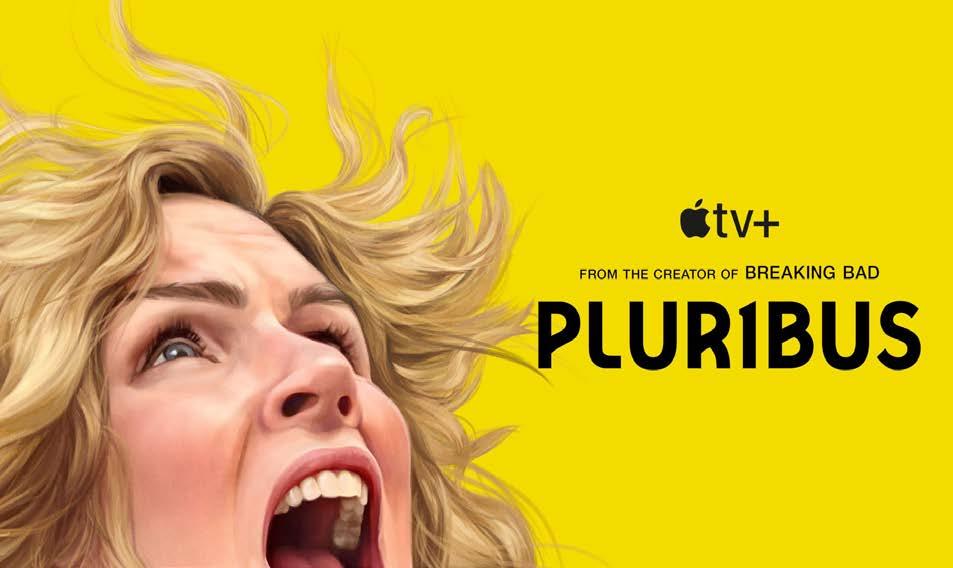
Vince Gilligan, the mind behind Breaking Bad and Better Call Saul, returns with Pluribus, a series that immediately stakes its claim as something radically different. From the very first scene, Pluribus makes it clear that this isn’t your usual scifi drama and is far removed from the world of Breaking Bad. The world of ‘Pluribus’ is stark, strange, and quietly unsettling—an audacious experiment that blends psychological tension with scifi mystery. Unlike anything Gilligan has done before, it’s a story where the familiar rules of society go topsy-turvy, and human behaviour is examined under a new lens. With only two episodes out so far, the series already promises intrigue, complex moral questions, and a central performance that anchors the narrative, hinting at a story that will unfold in unexpected ways.
The plot follows Carol Sturka (Rhea Seehorn), a successful novelist who seems perfectly ordinary—except she’s deeply unhappy. Almost immediately, the world around her changes. Everyone around her begins behaving in an unnatural manner, almost with robotic happiness, leaving Carol as the only person resisting this strange new order.
Carol realises she isn’t just out of sync—she’s immune. Characters like Zosia (Karolina Wydra) and the rest of the newly “happy” collective try to coax her into joining them, but she refuses. Later, when she meets 11 others from her tribe, her journey becomes
one of discovery, tension, and self-preservation as she begins to understand the rules of this strange new world.
What makes these early episodes stand out is the way they explore deeper ideas without ever feeling preachy. “Everyone happy” quickly becomes unnerving rather than comforting. The show slowly builds its world, showing subtle changes in behaviour and society. It’s about identity and choice—Carol’s fight isn’t just against an outside force; it’s about holding onto herself. Vince Gilligan’s signature style is there: a strong central character facing impossible odds, but now in a scifi setting rather than a crime story. The writing hints at future mysteries and moral dilemmas, keeping viewers engaged and invested.
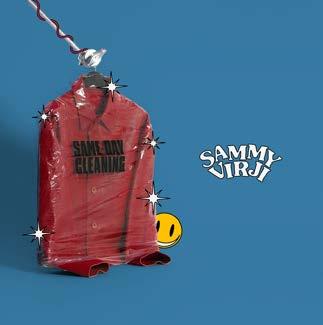

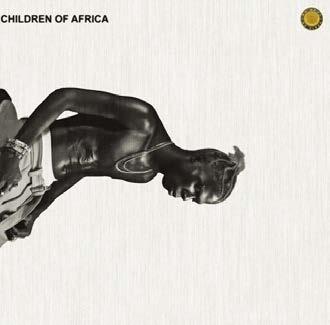
Rhea Seehorn carries the show effortlessly. She makes Carol’s frustration and confusion believable, and moments of fear, anger, or fleeting hope feel real. Karolina Wydra as Zosia complements her well, calm and unsettling in equal measure. The supporting cast helps make the world feel lived-in and strange at the same time. The first two episodes are heavy on atmosphere, so some minor characters aren’t fully fleshed out yet—but that actually adds to the mystery, keeping you guessing about their intentions. The chemistry between the cast gives life to a story that could easily have felt distant or clinical.
Pluribus is off to a strong start. It’s clever, unusual, and quietly tense, asking big questions about happiness, control, and individuality. The show moves at a slow, steady pace, giving the strange plot time to sink in instead of explaining everything at once. If you’re willing to lean into the uncertainty, it promises a story that will linger in your mind for a long time. For now, it feels original, intriguing, and very human—a show that’s worth your attention. With its striking visuals, smart writing, and strong lead performance, the series suggests that Pluribus could become one of the most talked-about series of the year.
Now Streaming on Apple TV+
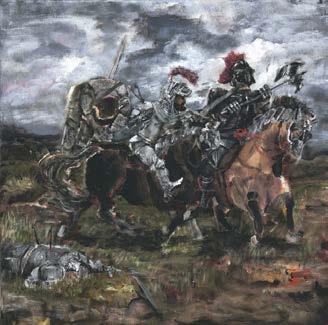
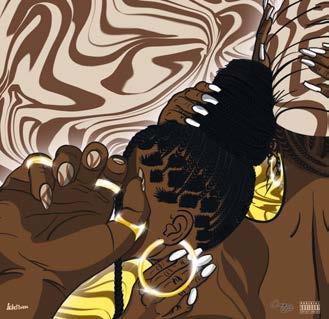

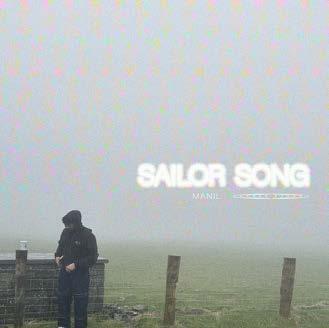
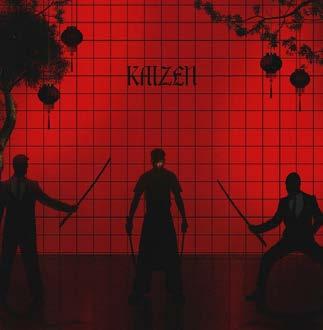
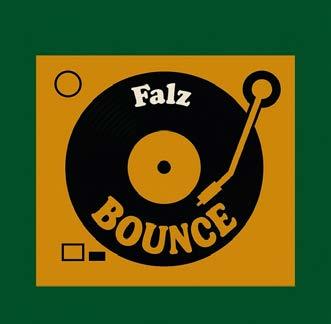
Sammy Virji; Skepta - Cops & Robbers
Gabriel Jacoby - the one
Seyi Vibez - SHAOLIN
Manil - Sailor Song
BhadBoi OML - Bag of Vibes Falz - Bounce
YUNGMORPHEUS - Self Sponsored
Craig Isto - Jo Jo
Boj - Fine Lady
